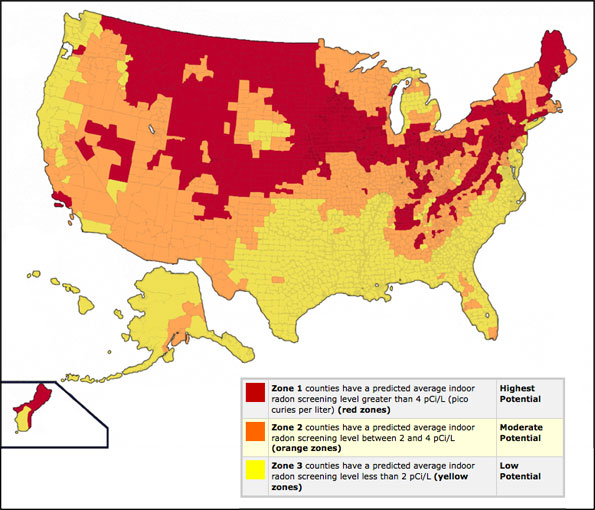This is a follow up post about the radon levels in the United States of America. As mentioned in an earlier post, radon is formed when uranium breaks down into radium, which breaks down into radon. Radon is absorbed by the soil and ends up in water wells and home foundations. According to the Environmental Protection Agency (EPA), radon levels shouldn’t exceed 4.0 pCi/L (pico curies per liter). The map below shows the radon levels by color – yellow representing Zone 1; counties where average indoor radon screening levels are less than 2pCi/L, orange representing Zone 2, counties where average indoor radon screening levels are between 2 and 4 pCi/L, and red representing Zone 3, counties where average indoor radon screening levels exceed 4pCi/L. According to the National Radon Defense, the best way to know the radon level in your home is to test for it.
Click here to visit the National Radon Defense website to learn more about radon, radon levels in the U.S. and radon testing.

Source: https://www.nationalradondefense.com/radon-information/radon-map.html







 Source: https://www.ed.gov/news/press-releases/educators-gather-white-house-rethink-school-discipline
Source: https://www.ed.gov/news/press-releases/educators-gather-white-house-rethink-school-discipline


You must be logged in to post a comment.